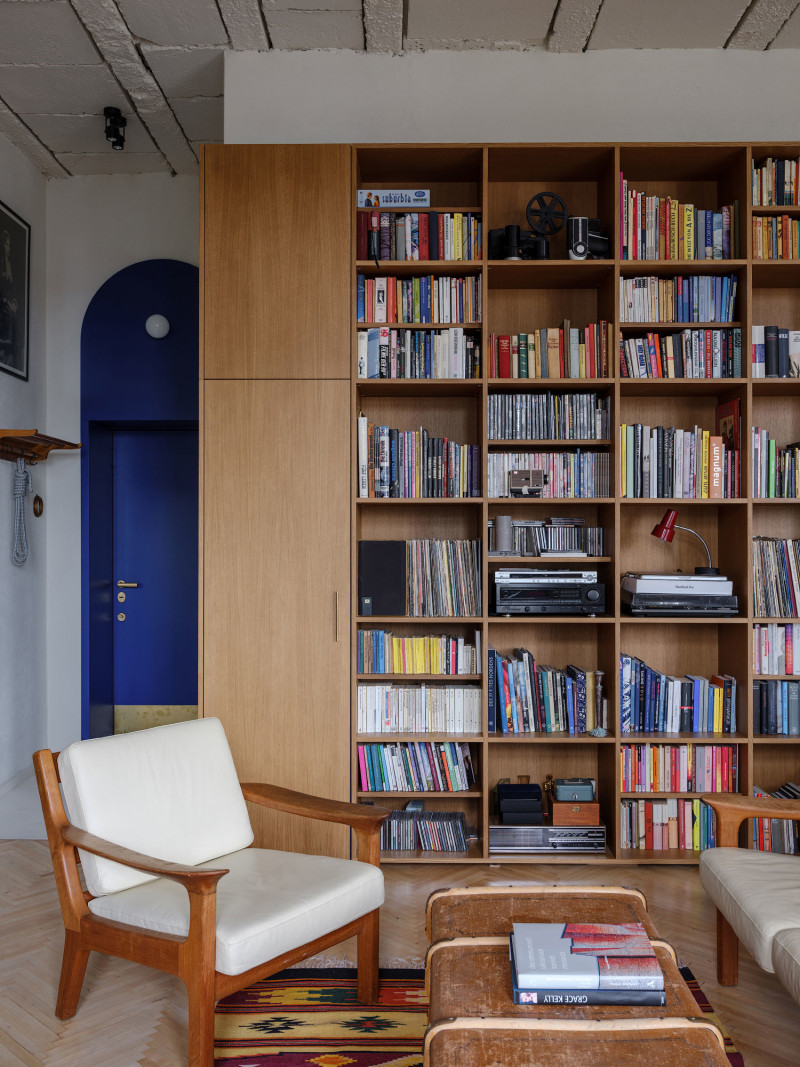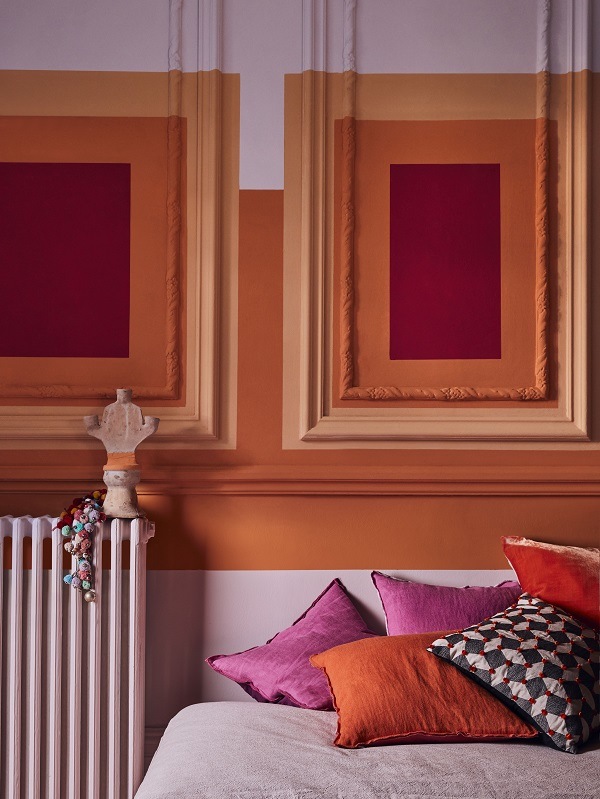6 Unexpected Ways to Use Paint That Involve More Than Just Walls
Think outside the box.
We often think of paint as being used only on walls. Typically, we pick a color that’ll pair with a matte white ceiling and trim—and call it a day. But how else can paint be used? What if the walls were left white and only the doors and trims were painted? What if only the ceiling was painted?
Interior designers and architects have been testing innovative ways to use paint for a while now, coating only doorways or ceilings or leaving the top half of walls white while painting the bottom half in a bold, dark hue. This trend is particularly popular in Europe where homeowners are often trying to highlight intricate architectural detailing or distract from it altogether.
If you’re feeling bored by your white walls but don’t necessarily want to paint your entire space, consider these other room paint ideas that either don’t involve walls at all or use them as a canvas for a unique motif. Chances are you’ll never look at a can of paint the same way again.

Create a colorful border
Interior designer Tali Roth wanted her NYC office to feel like a summer vacation. After adding bold and colorful furniture she highlighted the ceiling trim with a terra-cotta–hued diagonal stripe and a lilac and light blue border—all colors reminiscent of a Mediterranean summer by the coast. By leaving the walls white, she kept the space airy and bright.

Spotlight a door
In this Kyiv apartment by interior designer Emil Dervish, the walls and furniture were left white or finished in a light wood tone. The plywood shelving in the home showcases an impressive book collection. To highlight the door in an original way, the designer painted an extra-high Klein blue arch that also encompasses a small globe sconce—all contributing to making the front door much more impressive and making the ceilings feel higher.

Paint window trims
In this Mallorca home by SMS Arquitectos, plywood steals the show as the material of choice for the walls and ceiling, but color is introduced in a variety of interesting ways. Window trims are painted in a bold aqua—to reflect the pastel exterior of the house. Baseboards are painted in a warm terra-cotta hue to give the space a sense of local history, and doorways and hardware are also painted in primary hues: royal blue or mint green with red handles—all colors that can also be found in the original ceramic patterned tile in the entryway.

Highlight architectural details
In this Surrey home in the English countryside, 2LG Studio painted the walls in an unusual way—covering the walls, doors, and trims in a muddy hunter green and highlighting the steeply slanted ceilings in a blush pink hue. Every piece of furniture and fixture in the space also boasts one of the two contrasting tones to create a coherent and bold space that showcases the original architecture of the Arts and Crafts home.

Create a modern accent wall
In this Barcelona home, architect Raul Sanchez kept the walls, ceilings, and even the floors in a crisp white finish but highlighted a double-diamond-shaped structure in the middle of the home in a golden yellow hue, which can be seen from virtually every room. By creating this striking structure in the middle of the all-white space, Sanchez created a modern version of the accent wall—one that is much more striking and sophisticated.

Blur out the architectural lines
While this space does use paint on the walls, it’s done so in an untraditional way. Instead of highlighting the many architectural details, the rectangular shapes distract away from them, creating instead a graphic pattern in hues that are also repeated throughout the furnishings in the space. This is just one of the many ways to use paint in an innovative way that doesn’t simply involve painting walls in a traditional way.
By: Gabrielle Savoie | Domino.com | 1/17/2019
